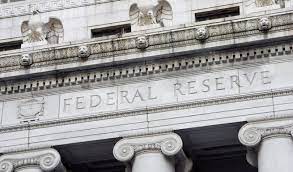Federal Reserve losses now exceed $100 billion, according to figures from the central bank disclosed on Thursday, and they’re certain to rise significantly more before the bleeding stops.
The American central bank continues to spend more on interest charges than it receives from the interest on the bonds it owns and on the services it offers to the financial industry. Some observers think the Fed’s losses, which started a year ago, might eventually quadruple before decreasing, despite the fact that how it will all turn out is still very unpredictable.
Yale University professor William English, a former senior central bank employee, predicted a “peak” loss of over $200 billion by 2025. Derek Tang, a forecaster at LH Meyer, stated that the loss will probably be between $150 billion and $200 billion by the next year.
The Fed records its losses as what it refers to as a deferred asset, an accounting metric that counts what it will ultimately need to pay before it can resume its customary practice of returning its earnings to the Treasury. Losses are quite uncommon for the Fed. However, the central bank has repeatedly emphasized that the situation does not in any way affect its capacity to implement monetary policy or monitor the economy.
Given its vigorous drive to raise interest rates, the Fed’s actions have not come as a surprise. Since March 2022, the benchmark overnight interest rate has increased from a level near zero to a range between 5.25% and 5.50%. It is generally believed that the Fed has finished, or is very close to finishing, raising rates due to declining inflationary pressures.
DAMAGE TO LIQUIDITY
However, it doesn’t necessarily follow that the losses will cease growing; given the current short-term interest rate environment, the net negative income will continue to rise for a while. As a result of the Fed’s continued process of reducing its balance sheet, which complements its rate hikes, the losses will finally end.
During the coronavirus outbreak and its early aftermath, the Fed actively purchased bonds. In the little more than a year since then, it has sold off about $1 trillion in Treasury and mortgage bonds. According to Fed officials, more needs to be done on this front, and as a result, the central bank will have to pay less in interest because it is draining the banking system of liquidity. Markets for financial instruments anticipate a halt in the second or third quarter of 2024.
Bank reserves and deposits into the central bank’s reverse repo facility are the two main sources of liquidity that the Fed is targeting. Through these instruments, the Fed pays a variety of banks, money managers, and other parties to store cash on its books. As a result, even if its policy rate remains the same, the central bank will pay less to secure the remaining funds if liquidity declines.
Even if interest rates remain high, English predicted that the pace of losses will slow down since reserves and reverse repos are dropping as assets run off and fresh securities purchases are earning new, higher rates. However, he admitted, “That’s all very rough,” given the numerous variables and uncertainties in play.
As of Wednesday, bank reserves were $3.3 trillion, down from a peak of about $1 trillion at the end of 2021. Between June 2022 and the end of June this year, the daily outstanding amounts for reverse repo decreased from above $2 trillion to $1.5 trillion. It’s likely that by the end of next year, all the money will have left reverse repos, bringing the facility back to where it was just over two years ago, according to a research report published this week by money market trading firm Curvature Securities.
ELECTION COST
Since a long time ago, the Fed has sent the Treasury sizable sums of money back, and this money has been used to reduce budget deficits.
The former president of the St. Louis Federal Reserve, James Bullard, stated in an interview on Wednesday that he is “worried” about the losses the institution is experiencing and that “it would be better not to do this.” In order to cover the kinds of losses it is currently managing, he said it probably would have been wiser for the Fed to have kept some of the $1 trillion it has granted the Treasury over the last decade. However, he pointed out that’s not the system Congress has set up.
When the Fed eventually stops losing money, it will be years before it can remove the deferred asset from its books and begin paying the Treasury again. After repaying $109 billion in 2021, the Fed handed out $76 billion in 2022.
Furthermore, the high-profit levels were dependent on the then-currently relatively low rates. The Fed’s ability to return to that environment is still up for debate, despite the optimism of some inside the institution, most notably John Williams, president of the New York Fed.

















